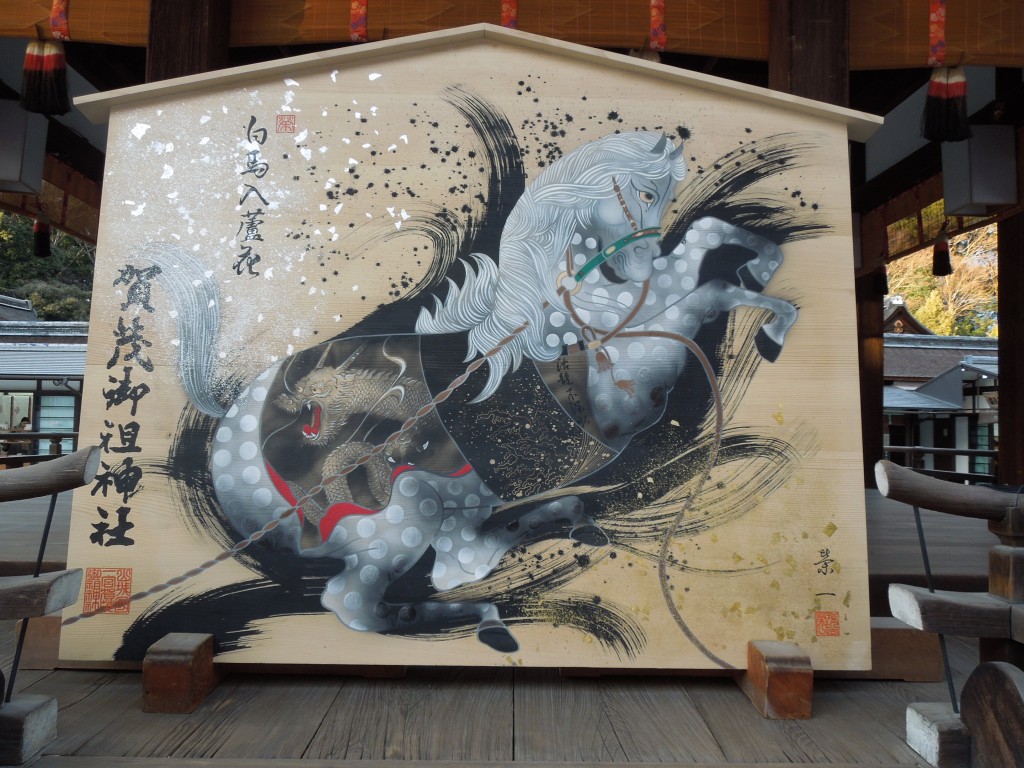
The large ema picture at Shimogamo to welcome in the Year of the Horse
This year I made two ‘hatsumode’ shrine visits. Hatsu means first, and mode is a formal word for visit, so it’s the first shrine visit of the year when traditionally one renews amulets and protective charms. People flock to the place of worship, toss in their coins, ring the bell, pay their respects, and find out what their fortune will be for the year. Some shrines get huge numbers: Meiji Jingu in Tokyo is usually top of the list with over 3 million visitors.
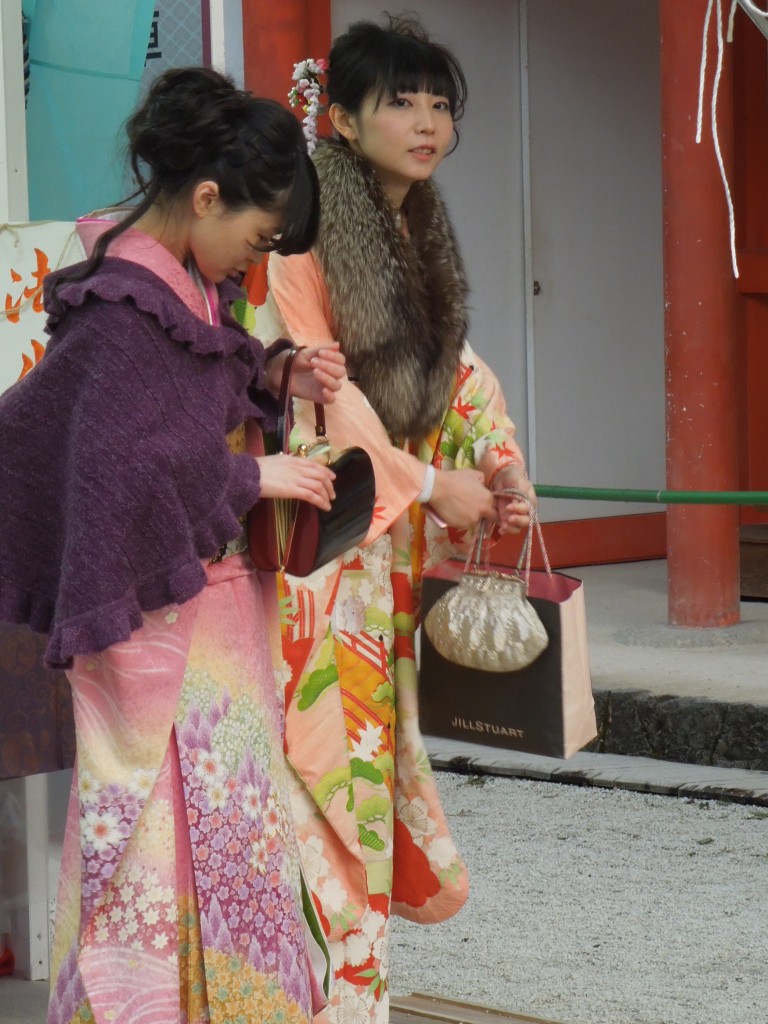
All dressed up for the first shrine visit of the year
My visits this year included my local shrine, Shimogamo Jinja (which just happens to be a World Heritage). I’ve been fourteen times in a row, and always enjoy the occasion, especially the sweet saké! There’s a brisk and happy atmosphere as visitors pour through the woods in droves, some dressed up in kimono and many clutching good-luck arrows or inspecting their fortune slips.
For a change, however, I decided to visit a shrine which hasn’t appeared yet on Green Shinto – Nishiki Tenmangu. It stands in a covered arcade, at the end of the wonderful Nishiki food market which is a must-see (and do) for anyone visiting Kyoto. The shrine too is small but bustling and packed with odd items of interest.
According to the shrine brochure, it originated in the early tenth century as a temple within the palace of Sugawara no Michizane’s father. Later it was moved around, before becoming dedicated to Tenjin (the spirit of Sugawara no Michizane) and taking its present position under the reorganisation of Kyoto by Hideyoshi in the 1590s. It was separated from its mother-temple in 1872 by the Meiji reformers, and much reduced in size by the building of a shopping arcade shortly afterwards.
The shrine has fresh spring water, pumped up from 37 meters below ground, and a reputation for bringing good luck and rewarding prayers. There are three mechanical machines which dispense fortune slips in unusual manner, and an original form of prayer by which you write your request to the kami on a slip of paper which is inserted into a round wooden ball.
There’s a happy bustling atmosphere to the shrine, much in keeping with its busy shopping arcade surrounds and nearby Nishiki market. There’s a room for private tuition in Japanese dance and music. It’s worth visiting for the atmosphere alone, but as a bonus the shrine literature boasts that “rewards for prayers to the god enshrined include intelligence, wisdom, academic achievements, productivity and a head for business. Prayers are also thought to bring good luck, apotropaic charms, and protection against evil and disaster.”
They say Japanese religion is all about ‘worldly profit’. Here’s a prime example. It’s easy to see why so many people drop in here while out shopping!
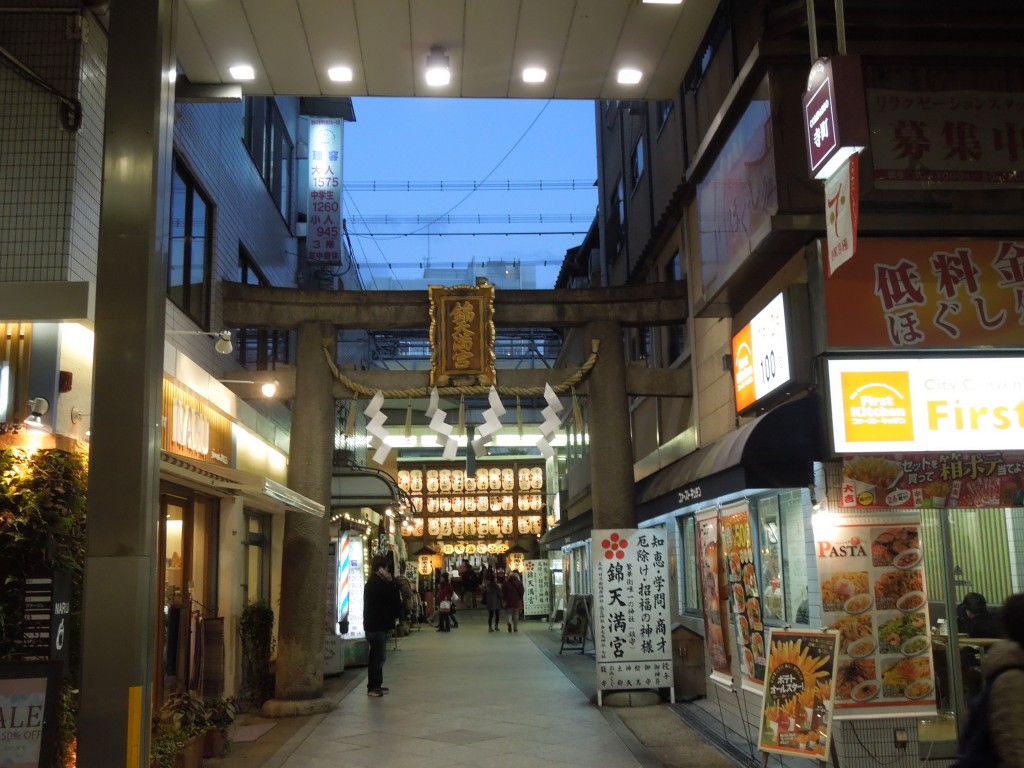
The torii and alluring entrance to Nishiki Tenmangu, squeezed into a shopping arcade and surrounded by materialism
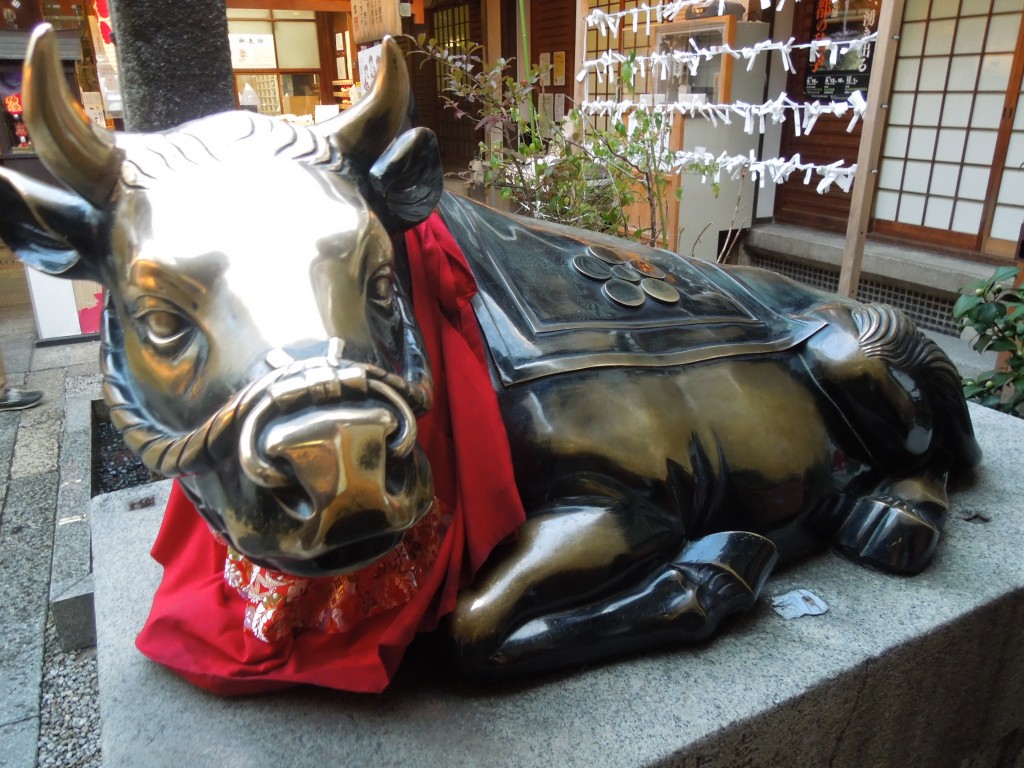
The Tenjin cow - you can always find one at Tenmangu shrines because an ox played a key part in the funeral mythology of Sugawara no Michizane, deified as Tenjin
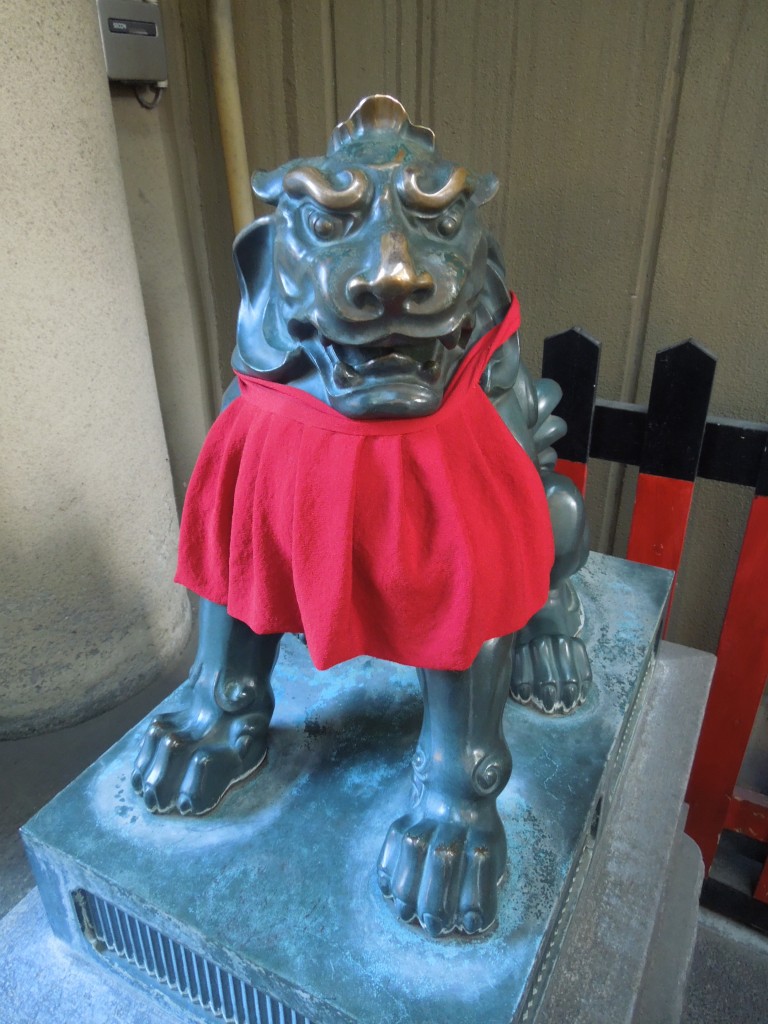
A komainu (lion-dog) guardian, unusually dressed in a red bib
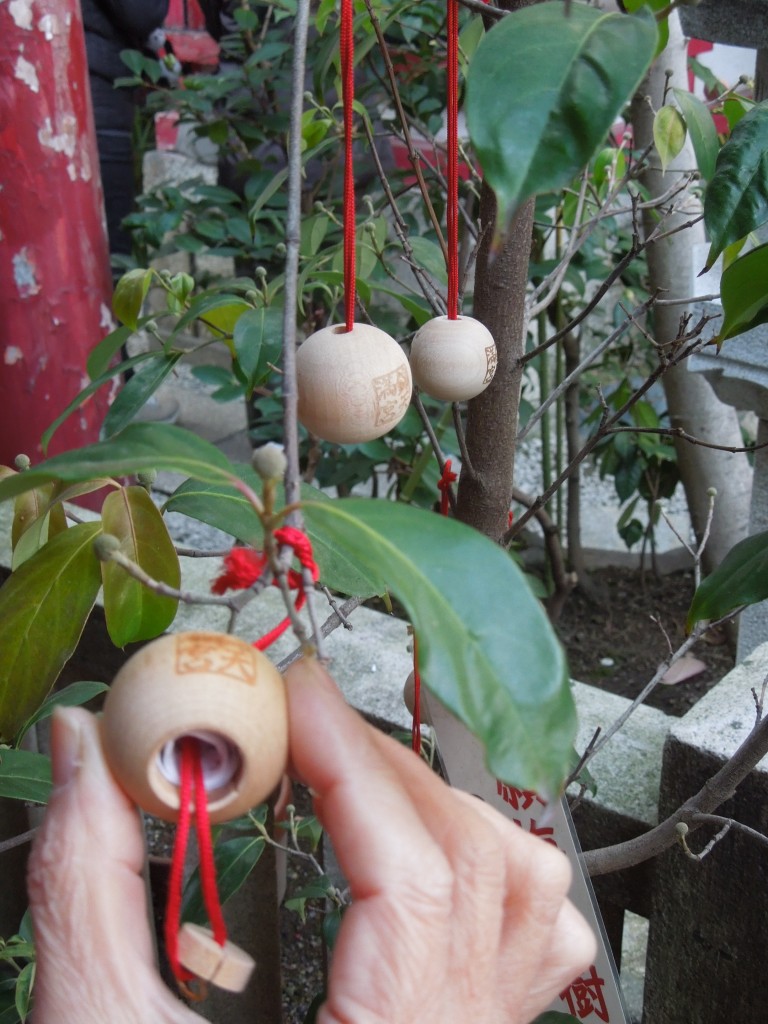
Wooden prayer balls, whereby you slip your paper prayer inside and hang it on the lucky plum tree (the plum is associated with Michizane who wrote a celebrated poem about having to leave his favourite plum tree behind in Kyoto after being sent into exile at Dazaifu in Kyushu)
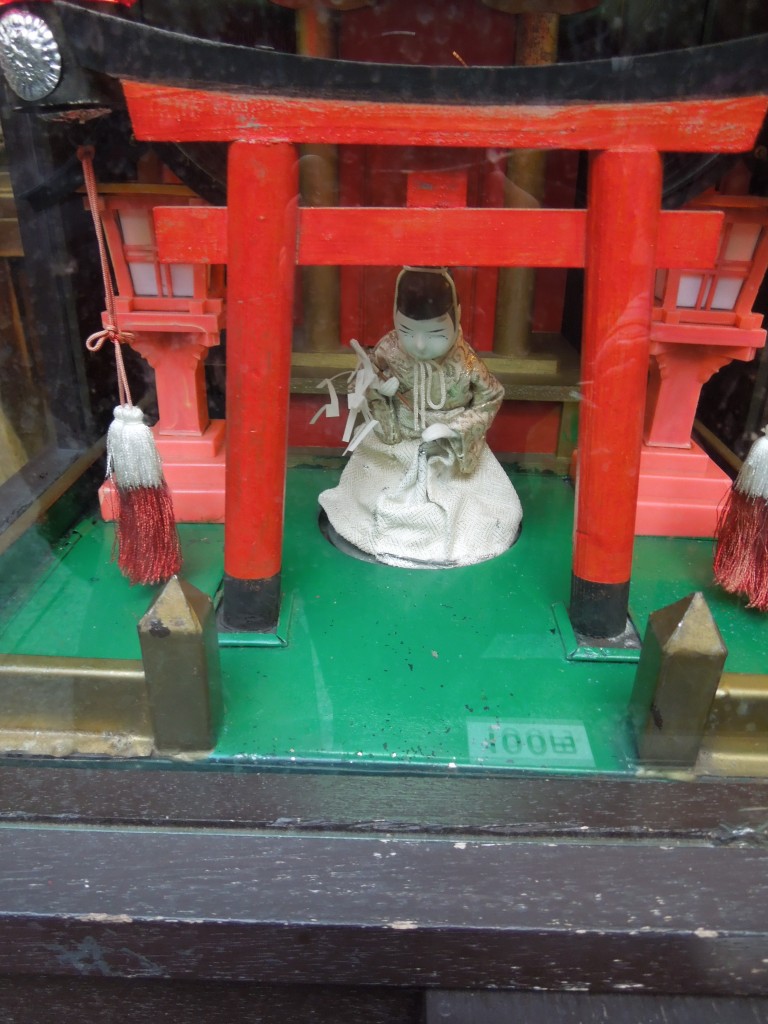
Put in Y100 and this mechanical priest will choose your fortune - one of three such machines at the shrine (the others feature dragon-snakes rather than a priest).
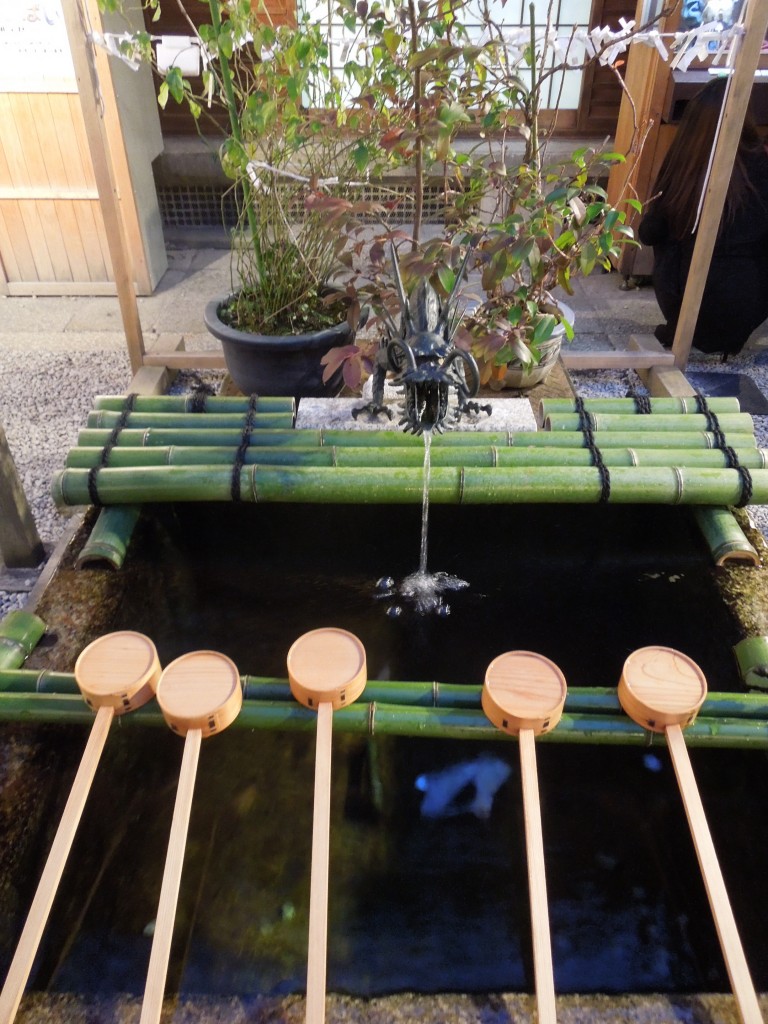
Pure spring water for purification prior to praying

Leave a Reply